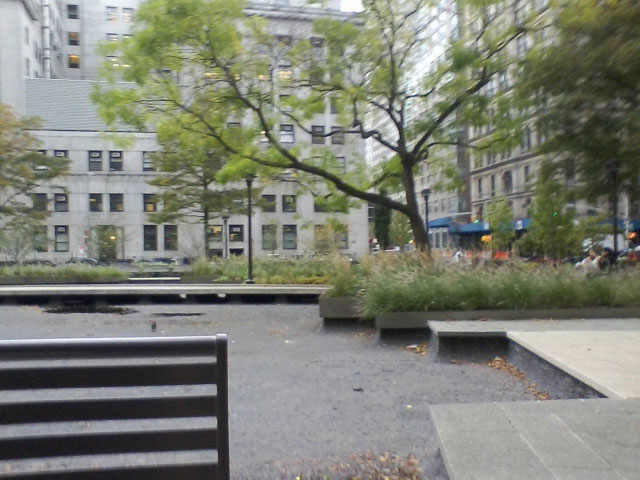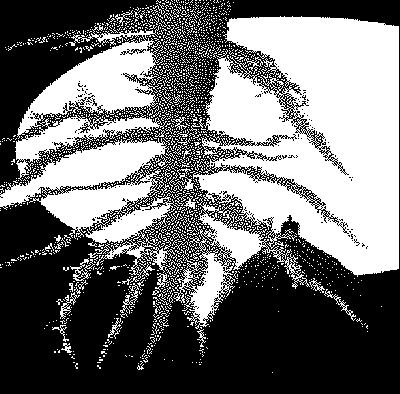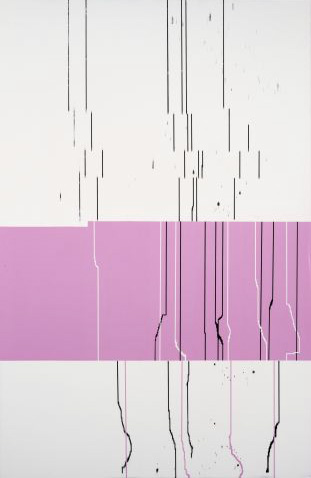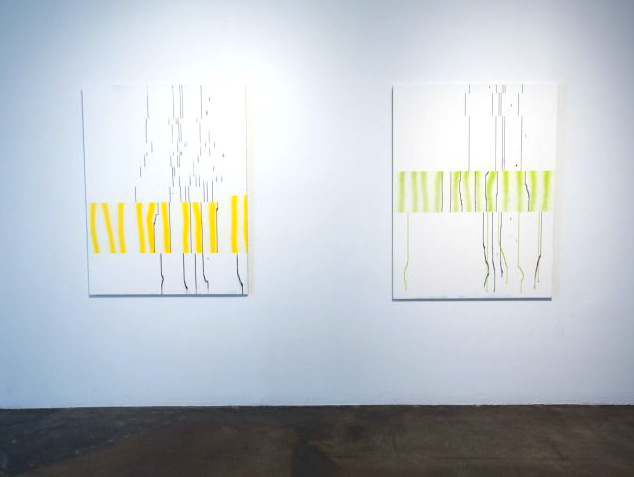
Am interested in the aesthetics of my non-smart phone's camera -- no arty filters here, and no "social" -- but I like the flattening out going on in this pic, and a hint of urban bleakness, courtesy of decisions made in the Samsung technicians' lab. This photo was taken while sitting, waiting to meet a friend at the new Postmasters gallery space a block away from this historic site.
Addendum: Am guessing that lower tier of concrete is supposed to be filled with water, a reminder of the lake that was once on this spot. It's not, just some puddles, making this park look even bleaker than it did before it was renovated a couple of years ago.



